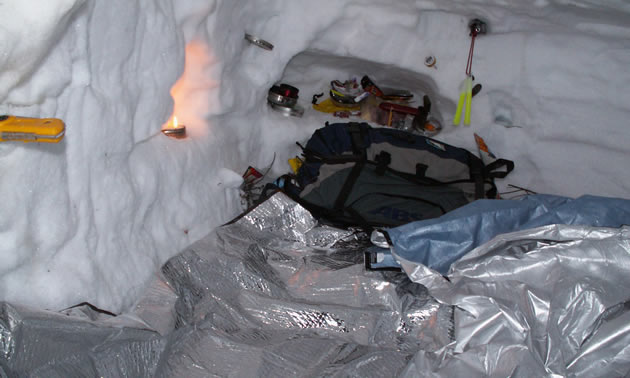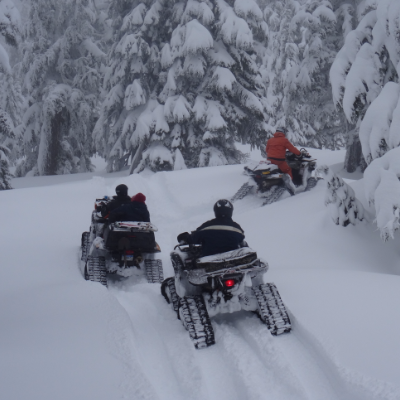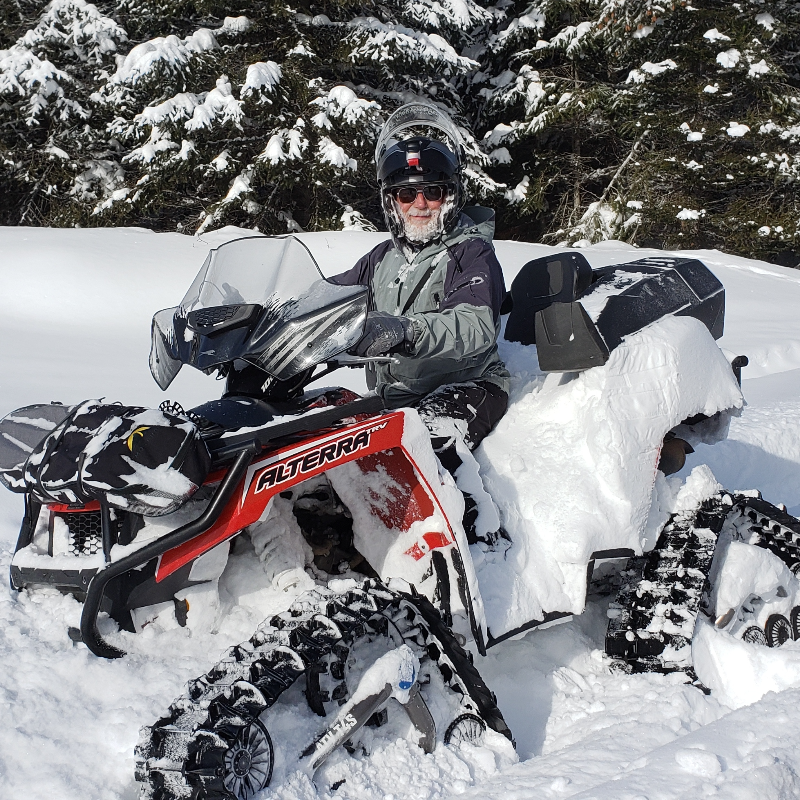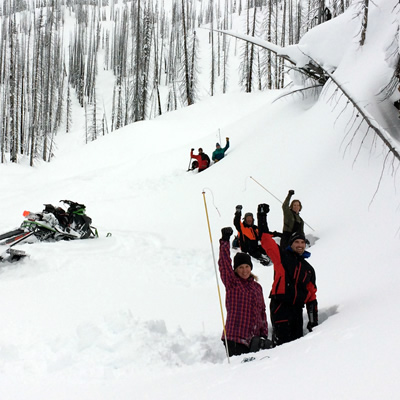Being a responsible mountain rider is more than being avalanche trained and carrying the gear. One thing that many riders have overlooked is their preparedness for backcountry emergencies, such as injuries or an overnight stay. We ride with some very prepared sledders and we are all often asked, “What’s with the crazy heavy backpacks? How can you ride with those things? Do you really need all that stuff?”
We have tried to fit our essential gear into smaller packs and we’ve stowed a few things on our sleds but it’s pretty obvious to our group that storage in backcountry packs needs to be 30 litres or more. It’s OK to store some of the less essential items on your sled—things like water, tools, sturdy ropes, extra goggles, a camera and lunch. However, in our opinion, the gear that you can’t live without should be stored in your pack. If you were ever separated from your group and your machine, you need to be carrying emergency gear, otherwise you could end up being cold, wet, hungry, thirsty and in the dark dealing with an injury or just trying to avoid hypothermia.
Some of the gear we all carry includes radios, a whistle, flares, tarps, spare clothing, emergency food and a small first aid kit. Super essential supplies, such as headlamps, lighters and firestarter, we each “duplicate and separate.” This means that we carry more than one type and we stow them in different places. Bulkier and heavier specialty items are distributed amongst the group. Specialty tools include a satellite phone, a mini stove, pulleys, heavier tow equipment and an axe.
Over the years, we have pulled out most everything in our packs to help people in need. We’ve helped groups trying to deal with avalanches, strokes, broken backs, broken bones, frozen body parts from super cold days and troubles at open creek crossings. Sleds have been broken down, out of gas, lost in bad visibility conditions and simply just stuck out in the dark.
Nelson, a friend from Regina, Saskatchewan, shared a recent incident about a serious femur break 30 kilometres from the trucks at 4 p.m. near Fernie, B.C. Read his play-by-play.
Nelson is well organized and prepared; however, in the course of the evening they used most everything in his pack and could have used more. While the Search and Rescue team remarked that they were one of the most prepared backcountry snowmobilers that they had ever rescued, Nelson still felt incredibly vulnerable. He recognized that they were just lucky. It would have been a struggle to keep the group comfortable and safe had they been forced to overnight.
It doesn’t matter how experienced you are or how conservative you may be, these are all situations that you could face on any riding day.
Are you curious what we pack? Visit Zac's Tracs website for a full listing. Leave a comment at the end of this online article and share the unique supplies that you carry. Tell us about the brands that you trust. There are always cool, new products coming out on the market. For the most part, you get what you pay for, but maybe you have found great deals on high-performance gear—be sure to share your secrets. As a community of mountain riders, it improves the safety and the image for all of us in the sport when the riders around us are skilled and prepared.







